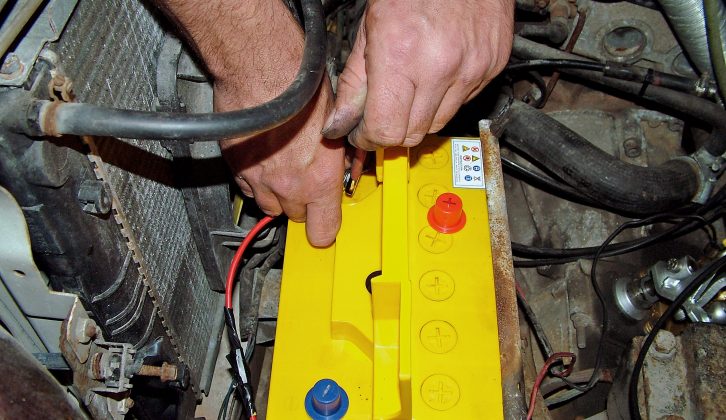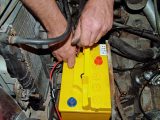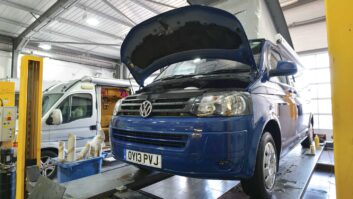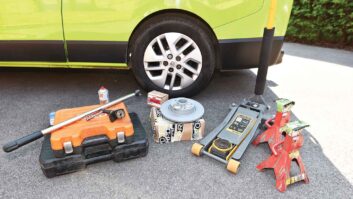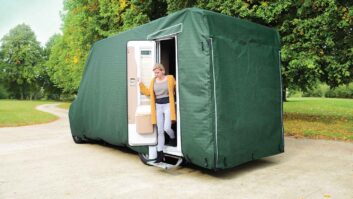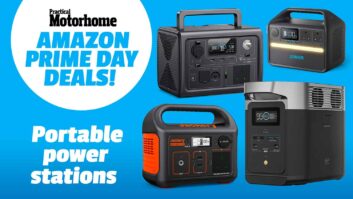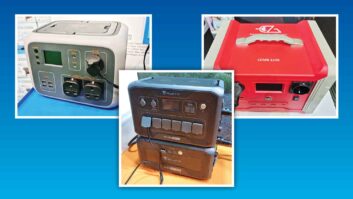Almost every campervan and motorhome for sale today has at least two batteries in separate systems. The first is the engine or starter battery whose job it is to power the base vehicle electrical systems, starter motor, engine management, road lighting and so on. Second is the leisure battery, which powers the habitation 12V equipment, lighting, water pump, 12V power outlets, blow-heaters and the like.
They are usually separated electrically so that base vehicle electrics don’t drain the leisure battery, and likewise the leisure equipment doesn’t drain the engine battery. The two batteries, while similar in type, i.e. lead acid, should be of dissimilar build because the way they are required to deliver their power is different.
The starter or engine battery has to provide a very high current of around 300 to 400 amps to start the engine but this will typically be for short periods of a few seconds, and once the engine is running the alternator will replace that fairly quickly. Whereas the leisure battery is required to give much lower currents for longer periods. A typical lighting circuit using halogen lights, for example, might have a total current draw of 10 amps but is required to provide that energy level for hours. For this reason, leisure batteries have a slightly different construction to starter batteries.
Mains charging takes place when the ’van is connected to mains power via the hook-up; older ’vans have a simple charger/power supply unit often set to a fixed output of 13.8 volts. This type of charger will not fully charge the leisure battery but if you use sites with hook-up this won’t be an issue, because you will be running everything from the mains.
Most modern motorhomes have multi-step charging from the mains supply and these work in the same way as described above. Some systems, but not all, will also provide a maintenance charge to the engine battery when on hook-up. If in doubt, read your motorhome’s manual.
Different types of charging
Think of your battery as a fuel tank – as you draw energy out of it you need to replace that energy, just as you must refill your fuel tank. The engine battery will recharge fairly quickly once the engine is running but there are three ways to recharge your leisure battery: engine-driven, mains electric and alternative-energy charging.
All commercially built ’vans with a leisure battery have a means of charging it once the engine is running. This is done with a relay that connects the engine and leisure batteries together. This method works well, but there are a couple of potential issues with it.
First, if the wiring is too light it will restrict the current flow and limit the charging. Second, if the leisure battery is heavily discharged then when the engine is started it can demand a high current, higher than the wiring is designed for, and this can cause the fuses in the charging circuit to blow. If the wiring is big enough and fused appropriately the charging current can be too high for the battery.
I work on the maximum charging current being no more than 20% of the total battery capacity.
A lot of modern ’vans use electronics in the charging circuit to provide multi-step charging. This means the charging voltage and current will be varied according to which step of the charging regime best suits the battery’s state of charge. A heavily discharged battery will cause the charging regime to start with a bulk-charge phase; this step increases the charging voltage for a period to drive more charge into the battery.
These types of charging systems will finish with a ‘float charge’ step, which means once the battery is fully charged the charging system will cut off and only monitor the battery cutting back in if the voltage drops below a pre-determined point. These charging systems will help to keep the battery in top condition.
Wind and solar power
The main issue with charging from alternative sources – solar- or wind-powered generators – is their output voltage fluctuates according to how much sunlight falls on the panel or how strong the wind is. If these power sources were directly connected to the battery they could easily overcharge it.
Therefore a charge regulator is used: in its simplest form it limits the charging voltage being fed to the battery. Sophisticated regulators perform similarly to multi-step chargers. Some electrical systems used in modern motorhomes have solar regulators built in. Using it can also give a maintenance charge to the engine battery.
A keen motorcaravanner, Practical Motorhome’s technical expert Diamond Dave runs his own leisure vehicle workshop. Find out more at Dave Newell Leisure Vehicle Services.
Think of your battery as a fuel tank – as you draw energy out of it you need to replace that energy
